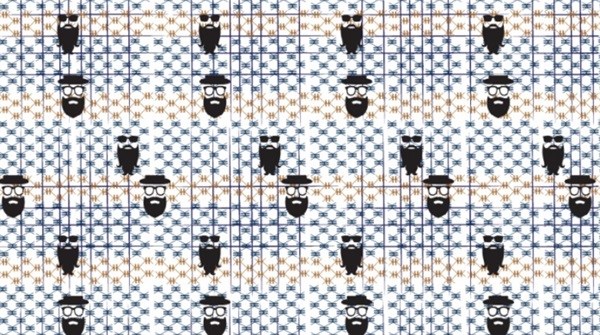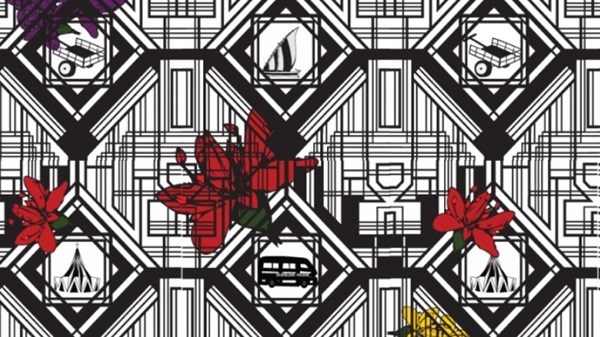Mozambican designer on taking back the African textile market

“I ended up figuring out that African textiles, in fact, were not really African. They were textiles that were brought to Africa via trade,” she says. “Some of them were an imitation of textiles that existed in West Africa. So they were like the mass-made answer to handmade textiles in West Africa. There are some batik elements in some of them but mostly they were produced in China or actually Holland.”
The history behind her discovery can be traced back to 1846 when Dutch textiles giant Vlisco first set up shop. The company had mechanised the wax-printing method used to make batiks worn in the West Indies (called Indonesia today). They introduced these lower-cost, mass-produced products into the West African market, replacing the more costly handmade textiles of the time.
While the market was later joined by Chinese and Indian companies, Vlisco remains one of the most popular makers and distributors of what we now know as African textile. Today, 95 per cent of Vlisco’s products are sold to African consumers. This is even though, as Nigerian scholar Tunde Akinwumi points out, the motif is based on non-African design.
“It’s kind of like a borrowed culture; it’s no longer ours,” says Zacarias. “If you look more in-depth about the design process of these textiles, there’s nothing really about African heritage in them. It’s just somebody in a company somewhere in Europe or in China or in India who is dictating what is African now.
“So this is really the moment that I decided I wanted to be a part of doing something about this. I wanted to be part of that solution.”
Zacarias started her first company in 2008, before learning about the history of African textiles. Woogui, an ethical accessories and tailored shirt brand, was established to “reinvent the African fashion industry in Mozambique”.
Later, along with Mozambican fashion designer Djamila de Sousa, Zacarias established Karingana Wa Karingana Textiles, a Mozambique-based company that prints authentic African textiles based on tradition, culture and customs.
In a print designed to raise awareness about Movember, a month dedicated to prostate cancer awareness, Zacarias tackled an issue that’s not as widely discussed in Africa. “It’s us saying to them [African consumers] that sometimes things that come from outside are interesting and are important. It’s us raising awareness about men’s health and saying to our African brothers go get yourself checked out. So this was a very interesting print to design,” she adds.

In another print series, Zacarias pays tribute to the city of Maputo. “That print connects with all of us because it’s about the city we grew up in,” she explains. “It has the icons that we believe in and see every day. Like there’s a church that is very iconic. There is the public transport. There’s the dahl boat that you see here. There’s a Cassia flower. So those are all things that we recognise as part of our heritage.”

Through storytelling, Zacarias hopes to bridge the gap between African textiles produced in Africa – where the production and import of raw materials are more expensive – and the accessibility of cheaper mass-produced prints from across the border.
But, not everyone has taken such a hardline stance to what constitutes an authentic African print. Dilys E. Blum, the Philadelphia Museum of Art’s senior curator of costume and textiles, explained to Fast Company that no matter where the prints are sourced, they still give way to African individuality, expression and customised tailoring.
“On the body, they are something completely different because the dressmaker or tailor has to use that pattern in a creative way,” she was quoted as saying.
For Zacarias, the aim is not to replace this process but rather to offer an alternative. “We’re fully aware that it would be very hard for us to compete with China and India price-wise because mass production does mean more accessibility. But we are not trying to compete with them,” she explains. “We are offering them an alternative. We are offering a niche market product and we are aware that we are going to have a higher price but we are offering something that is made in Africa.”
Zacarias says she is motivated by the idea that Africa could be retaining more of the annual profit made by African textiles globally. She is part of a growing number of designers, including Nigerian fashion designer Maki-Oh and French-Ivorian Laurence Chauvin-Buthaud of LaurenceAirline, who view sourcing within Africa as a point of national pride.
“There are textiles that are worn when people are born, there are textiles that are worn when people die. There are textiles only wedded women can wear in certain regions of Africa. So there’s a language almost, there’s a way of communicating through the textiles that exist in our culture. It’s still very present today,” she added.
Source: Design Indaba

Design Indaba inspires and empowers people to create a better future through design and creativity. We are an online publication (www.designindaba.com) with an annual festival and social impact Do Tank.
Go to: www.designindaba.com






















